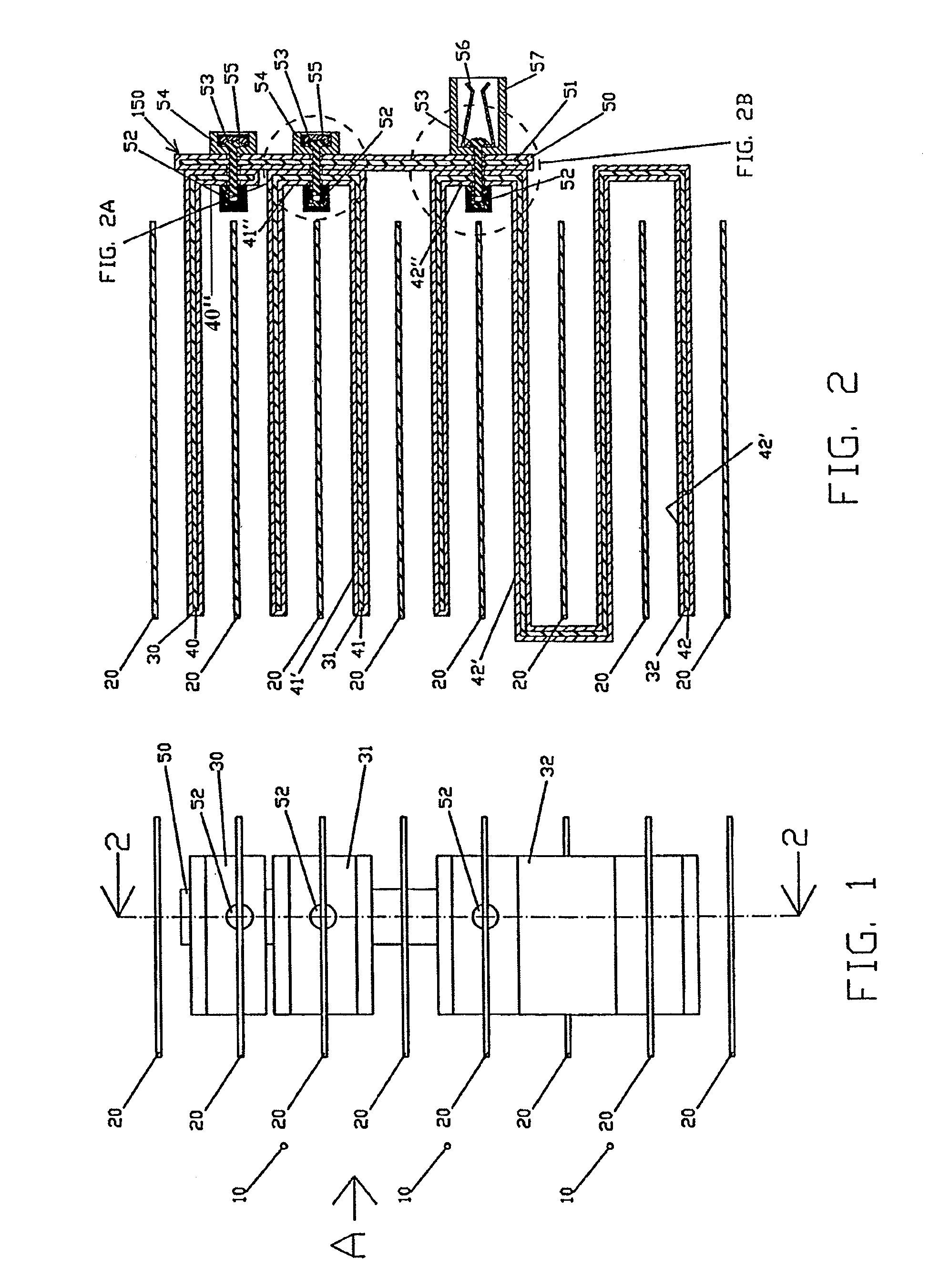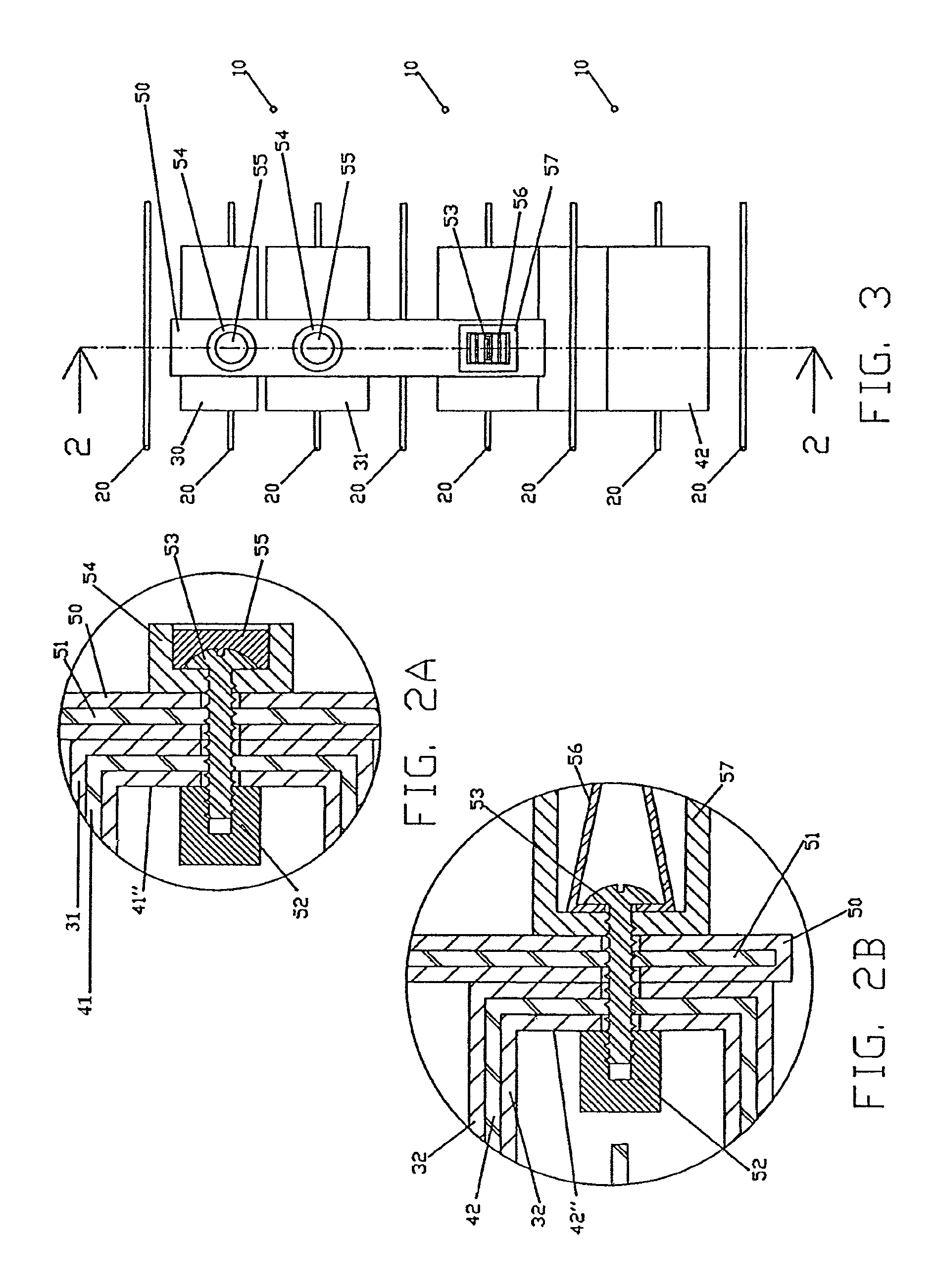Collector modules for devices for removing particles from a gas
a technology of collecting modules and gas, applied in the direction of transportable electrostatic units, electric supply techniques, magnetic separation, etc., can solve the problems of shortening the effective “creeping distance”, affecting the efficiency of the operation, and the risk of damaging the arc between the components at different potentials, etc., to achieve the effect of enhancing long-term reliability, reducing time and cost, and reducing the risk of damag
- Summary
- Abstract
- Description
- Claims
- Application Information
AI Technical Summary
Benefits of technology
Problems solved by technology
Method used
Image
Examples
Embodiment Construction
[0032]FIGS. 1 to 3 illustrate a collector module of the present invention embodying two aspects of the present invention which minimize the number of electrical connections to the insulated driver plates and minimize the use of epoxy. This illustrated collector module comprises eight collector electrodes 20 which are positioned with seven driver plates 40 positioned between them. Supporting structure and other components of the air cleaner are not shown in these figures. One or more emitters 10 can be included in the collector modules of this embodiment of the present invention, but in this illustrated embodiment, the illustrated emitters 10 are not part of the collector module. In this illustrated embodiment, the air flow is in the direction of arrow A shown in FIG. 1. The device can also be oriented in a different direction, e.g. for a vertical air flow, if desired.
[0033]As best shown in FIG. 2, four insulated driver electrode plates 42′ are formed by bending a single, insulated, ...
PUM
 Login to View More
Login to View More Abstract
Description
Claims
Application Information
 Login to View More
Login to View More - R&D
- Intellectual Property
- Life Sciences
- Materials
- Tech Scout
- Unparalleled Data Quality
- Higher Quality Content
- 60% Fewer Hallucinations
Browse by: Latest US Patents, China's latest patents, Technical Efficacy Thesaurus, Application Domain, Technology Topic, Popular Technical Reports.
© 2025 PatSnap. All rights reserved.Legal|Privacy policy|Modern Slavery Act Transparency Statement|Sitemap|About US| Contact US: help@patsnap.com



